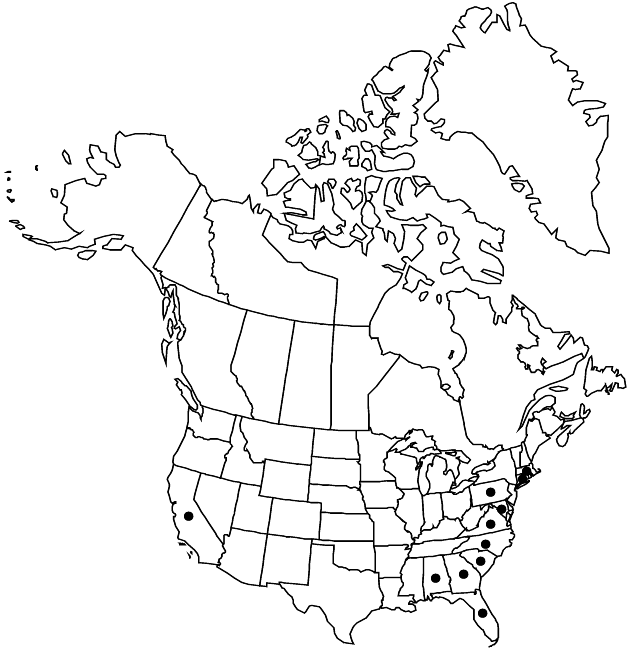Annuals, 30–100 (–180+) cm. Leaf-blades 80–150+ mm overall, lobes or leaflets 9–17+, narrowly lanceolate to lance-linear, 12–25 (–50+) × (2–) 4–7+ mm. Heads in ± corymbiform clusters. Peduncles 1–5+ mm. Involucres 7–10+ × 1.5–3 mm. Ray-florets 1–3; laminae yellow, ± ovate to elliptic, 1–2 mm. Disc-florets 3–5; corollas 3–4 mm. Cypselae (4.5–) 6–7+ mm; pappi of 1–2 ± subulate scales 2–3+ mm plus 3–5 distinct, ovate to lanceolate scales 0.5–1 mm. 2n = 48.
Phenology: Flowering Sep–Oct.
Habitat: Disturbed sites
Elevation: 0–100+ m
Distribution

Introduced; Ala., Calif., Conn., Fla., Ga., Md., Mass., N.C., Pa., S.C., Va., South America
Discussion
Tagetes minuta is widely cultivated for use as a condiment and has become widely established or persists after plantings.
Selected References
None.
Lower Taxa
None.
... more about "Tagetes minuta"
introrse +
connate +
herbaceous +
scarious +
absent +
hirsute +
papillate +
continuous +
decurrent +
pinnatisect;lobed;mostly lanceolate;oblanceolate +
winged;ribbed;winged;ribbed +
1;22 +
stigmatic +
20;50 +
absent +
tipped +
monomorphic +
dimorphic +
6mm;7mm +
staminate +
straight +
distinct +
proximal +
1;5 +
bisexual +
dispersed +
cylindric +
singly +
indeterminate +
true +
surrounding +
fusiform;turbinate or broadly campanulate +
yellow +
opposite +
cauline +
2-carpellate +
inferior +
attached +
anatropous +
persistent +
distinct +
longer +
falling +
absent +
tough +
thick +
absent +
connate +
persistent +
distinct +
falling +
unequal +
Sp. Pl. +
1753 +
pistillate +
absent +
fertile +
epaleate +
convex;conic +
fibrous +
subulate +
exalbuminous +
modifed +
0;5 +
alternate +
branched +
erect +
2-branched +
papillate +
Tagetes minuta +
Tagetes +
species +
cylindric +
equaling +
much longer +
annual +